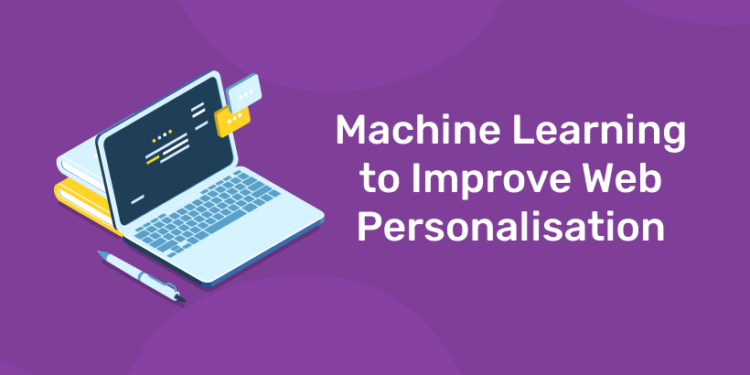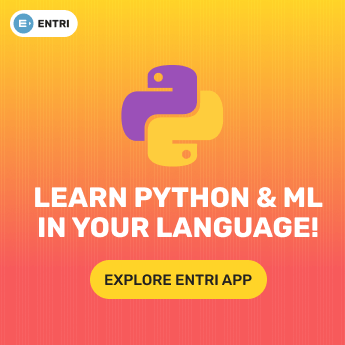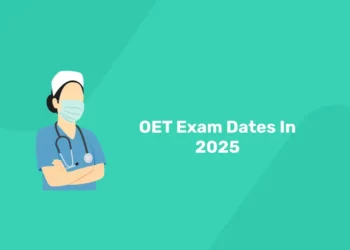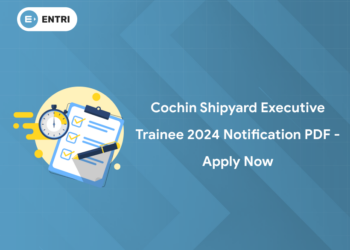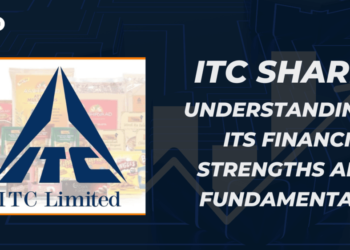Table of Contents
If you are here to learn about the miracles of the technological marvel of the 21st century called machine learning, you are in for a treat. Let’s understand briefly what machine learning and personalized machine learning does and why its demand has been growing this decade.
How Does Retargeting in Machine Learning Algorithms Help in Web Personalisation?
Machine learning is a branch of Artificial Intelligence technology which is the pioneer of the latest wave of industrial revolution 4.0. This era is all about reducing human inputs and giving more freedom to the machine to act on its own by developing the required knowledge to carry out a given task. The machine learning algorithms help machines and computers to learn from a given set of data and use the insights for future applications.
We have become comfortable with empowering machines to make decisions because it reduces human errors. Machines also don’t repeat the same mistakes which means that machines would be much more efficient at executing tasks.
We are living in an economy where the main objective of any business is to minimize cost and maximize revenue to increase profitability. Naturally, this new development in the form of machine learning and AI technology helps businesses save a huge chunk of money that they would have spent if they hired human labour instead.
The internet has simplified our lives to a great extent. From buying clothes to getting it cleaned, everything you need can be done in a click, so where do you spend most of your time? Businesses today have changed, what once used to be a brick and mortar store has got a .com attached for its web presence. You just have to open your smartphone and go to the World Wide Web to avail any kind of goods or services you require.
The world is getting smarter and if you intend to be in business you have to be smarter than the rest. So how do you do that in an era of AI technology? You use it to attract your prospective customers. Let’s start with a simple question – what is the first thing you notice about a brand’s web presence? The website of the brand would be a common and obvious response.
An optimal way to bring more customers on your website would be by improving your website design and making it more personal for the users. Now, let’s dive deeper into the subject to understand how machine learning helps to increase your profitability prospects.
Re-targeting and its Importance
1: Which of the following algorithms is most suitable for classification tasks?
Re targeting or behavioral targeting can be understood as a kind of remarketing strategy for your prospective customers. It is a type of advertising that helps to build brand recall in the minds of users who visited the website, especially those who left too soon and surged your website’s bounce rate. If we go by the analysis on web traffic, only 2-3% of the first-time visitors get converted into customers. So, to tempt in the existing 97% visitors who didn’t buy into what you had to offer, the re targeting method helps a great deal.
Jumping over to the technical functionalities of the re targeting method, the re targeting strategy is a cookie-based technology that tracks your website visitors even after they have left your web address, following your prospective audience all the way through their internet journey using the JavaScript code to maintain anonymity.
Re targeting works better as a part of your whole digital marketing strategy; the main emphasis of re targeting is to increase conversions rather than just bringing in traffic. Obtaining traffic for your website can be done with the help of content marketing and AdWords. An increase in conversion means an increase in sales and more profit for the business so re targeting optimizes conversion and brings in more customers who were not converted in the first go.
How do Machine Learning algorithms help with re targeting? Re targeting blindly without detailed inspection is incapable of producing any result. Companies are boosting their re marketing performance with the help of AI-based segmentation. A person visiting your website or even adding a product to their cart doesn’t give you much insight as to whether they will return for purchase after abandoning the cart. The deep learning algorithms are a real lifesaver in this regard.
With deep learning algorithms, you can easily assess the browsing patterns of the people who already purchased some of the other product that was available on your website. It helps the marketers to identify the trigger point which induced a purchase, it’s fairly easy when the customers are already familiar with the brand. Businesses with subscription-based products and services can easily find out if they are about to lose a customer and can then customise deals as per their requirements.
Get a free demo for our certificate program in data science and Machine learning
The Importance of Web Personalisation
Let’s take a more familiar approach to understand how web personalisation and machine learning have been working in conjunction to provide value to the customers. So where do you watch your favourite movies or Television Series? Netflix, Amazon Prime would be the mainstream response, other OTT platforms are also in the queue.
If you compare your recommendations with your friends’ there might be a huge difference. This is where web personalisation comes in. Gone are the days where there was a generic version that was for everyone, in this hyper globalised and hyper-personalised world it’s all about custom fit.
Today web personalisation is the norm. Web personalisation can be understood as a process of creating a highly customised experience for the visitors on the website based on insights obtained from data sets related to the individual, and it needs continuous monitoring and assessment.
With the help of personalized machine learning, large scale personalisation has been possible. Machine learning helps to gain insights by processing piles of data in seconds to create highly personalized recommendations based on the data provided. Hyper personalisation is more of a one on one approach rather than categorizing people in a group based on some similar attributes. The whole process is facilitated with a mixture of base algorithms, filters boosters, and variations. The base algorithms lay down the groundwork for providing recommendations and personalized experience using specific criteria like recently published, trending, etc.
Re targeting and personalisation are a ever-present phenomenon if you are somehow connected with the internet. Web personalisation is mostly used in the e-commerce industry for better targeting of prospective customers and increase conversion rates. OTT platforms like Netflix and Amazon Prime use hyper-personalisation to provide the best recommendations that go in line with the viewer’s preferences based on their past browsing history.
Some of the most common Machine Learning algorithms used for creating a personalised web experience are listed below:
- Clustering Algorithms
Clustering algorithms are categorised under the unsupervised section of Machine Learning algorithms that uses unlabelled data which is later grouped on the basis of similar traits & characteristics and then added to clusters. It has various applications across different industries. It is generally used in the areas of customer segmentation (on the basis of purchase history, etc.) & development of recommendation engine.
- Association Rules
This algorithm is used to discover new and interesting relationships between variables in huge data sets that might not be very evident to realise. It plays a crucial role in building recommendation engines like that of Netflix and Amazon. The algorithm uses various metrics to understand the degree of association and relationship between variables. For example, the support metric helps to choose the items of high significance for further analysis from millions of records.
- Markov Chains
To put the idea of Markov chains in a layman’s term, the Markov rule concludes that for any random process, the historical facts and figures won’t provide a reliable estimate to predict future output. It is used to describe a sequence of events based solely on the current state. The Markov chain algorithm uses real-time data and helps to build AI-powered recommendation engines when used in conjunction with other ML algorithms.
Concerns with Data Privacy
All these revolutionary technologies are fuelled by tons and tons of data, most of which are very personal to the user. Data has been the catalyst in the technological evolution but what if it’s not used for the intended purpose and is placed in the wrong hands? Well, the outcome would be disastrous. You must be aware of the Facebook data violation policy, that was just one company and today most of them are powered by data and the internet.
Data Privacy has always been the concern among people who fear that their personal experiences which are highly confidential in nature could be among public records. Proper guidelines should be established to dictate the use of data and establish the limitations and penalties when violated. Users should be made aware of the purpose for which the data is recorded and intended to be used in the future before they accept the terms and conditions.
Learn data science and machine learning course
With the advent of machine learning technology, the dynamics of business have totally changed. Companies have been more aware than ever as to who their prospective customers could be and how to market products and services with a personal touch making it more lucrative and interesting for the user. Piles and piles of data are processed and analysed with the help of machine learning algorithms to better obtain insights into the visitor’s behaviour pattern and their past purchase history. Since this technological advancement is wholly powered by data, the violation of data privacy remains a major challenge and drawback of using this technology. Upskill in machine learning and data analytics to avail the opportunities of the changing economy.
Personalized machine learning
Every day we interact with machine learning systems that personalize their predictions to individual users, whether to recommend movies, find new friends or dating partners, or organize our news feeds. Such systems involve several modalities of data, ranging from sequences of clicks or purchases, to rich modalities involving text, images, or social interactions.
While settings and data modalities vary significantly, in this book we introduce a common set of principles and methods that underpin the design of personalized predictive models.
The book begins by revising “traditional” machine learning models, with a special focus on how they should be adapted to settings involving user data. Later, we’ll develop techniques based on more advanced principles such as matrix factorization, deep learning, and generative modeling. Finally, we conclude with a detailed study of the consequences and risks of deploying personalized predictive systems.
By understanding the principles behind personalized machine learning, readers will gain the ability to design models and systems for a wide range of applications involving user data. A series of case-studies will help readers understand the importance of personalization in domains ranging from e-commerce to personalized health, and hands-on projects and code examples will give readers experience working with large-scale real-world datasets.



